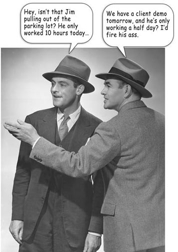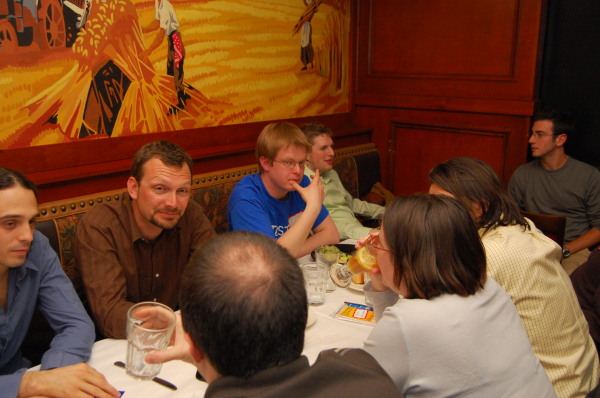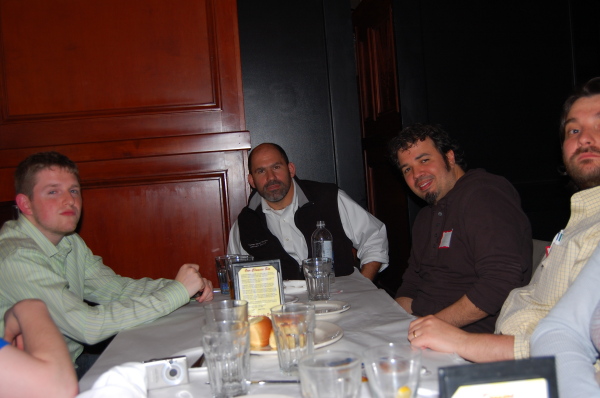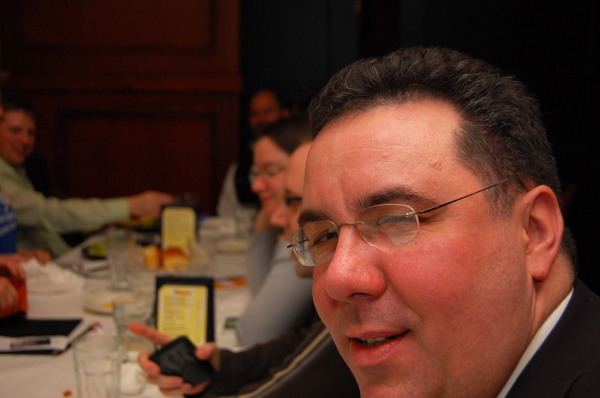DSC_0355
DSC_0391
1 DSC_0388
Decadence defined: The beer-tossing fridge
Surely this will be posted to every blog in the world in a matter of days, but I just couldn’t resist…
From CNN’s Man relives college life with beer-tossing fridge:
An engineering graduate has built a contraption to help remind him of campus life: a refrigerator that can toss a can of beer to his couch with the click of a remote control.
It took the 22-year-old Cornwell about 150 hours and $400 in parts to modify a minifridge common to many college dorm rooms into the beer-tossing machine, which can launch 10 cans of beer from its magazine before needing a reload.
Video found at Deadspin:
Women turning off TV networks’ morning shows, says Baltimore Sun
The Baltimore Sun has a fascinating article this morning (link) in the fact that women are increasingly finding tha using the Internet is a more efficient use of their precious time than watching morning shows on TV… Should come as no surprise but the change seems quantifiable now:
When her children were young, Jenny Lauck flipped on Today or Good Morning America as she brewed her morning coffee and tended her babies.
But several years ago, the 34-year-old mother of three stopped watching the morning shows. After getting TiVo, she had no patience to sit through multiple commercial breaks during a live newscast. On top of that, the segments seemed frivolous.
“Watching morning television for me is the equivalent of reading People magazine in the dentist’s office,” said Lauck, who writes for Web sites from her home in Santa Rosa, Calif. “It seems like a lot of fluff. I feel like I can get information faster and cleaner on the Internet.”
Lauck is not alone in souring on network morning news programs. In particular, this season has seen a significant erosion of the shows’ demographic sweet spot: 25- to 54-year-old women.
Almost 450,000 of these women – coveted by advertisers because of their household purchasing power – have turned off the three broadcast morning programs this season, a decline of 10 percent compared with the same time last year, according to a Los Angeles Times analysis of Nielsen Media Research data. Male viewers the same age also fell by 9 percent, but they make up a smaller portion of the audience.
It’s difficult to trace the exact cause of the drop. It comes after two popular morning hosts, Katie Couric and Charles Gibson, left their shows to be evening news anchors. At the same time, the popularity of online news sites and the frantic press of daily life appear to have led many women to forgo morning TV. Women are also turning increasingly to “mommy blogs,” which now number 6,400, according to the blog search engine Technorati, to swap tales about modern motherhood.
Please check out the rest of this article, this really shows the impact that access to community and content is having on our lifestyles.
There are now 63 million AOL/AIM OpenIDs
 If anyone out there had any doubt about the utility of OpenID, there are now 63 million AOL/AIM OpenIDs.
If anyone out there had any doubt about the utility of OpenID, there are now 63 million AOL/AIM OpenIDs.
63 million AOL/AIM users can now login to your application using OpenID if you support it…
63 million…
How can you get your employees to be passionate about your company?

Kathy Sierra answers the question: How can I get our employees to be passionate about the company? Wrong question, she says.
The company should behave just like a good user interface — support people in doing what they’re trying to do, and stay the hell out of their way. Applying the employer-as-UI model, the best company is one in which the employees are so engaged in their work that the company fades into the background.
…
Finally, if you really want your employees to be passionate about the company, take lessons from UI and Usability: let people do what they want and need to do, and get the hell out of their way. Unfortunately, too many of our employers are like really bad software–frustrating us at every turn, behaving inconsistently, not giving us a way to learn new things and develop new, cool capabilities, etc.
She offers this 4 question test to see if you have passion for your work:
- When was the last time you read a trade/professional journal or book related to your work? (can substitute “attended an industry conference or took a course”)
- Name at least two of the key people in your field.
- If you had to, would you spend your own money to buy tools or other materials that would improve the quality of your work?
- If you did not do this for work, would you still do it (or something related to it) as a hobby?
A must read.
How Should we Compare Performance on Managed Blogging Services?
Rick Ralston of Real Metrics dropped me a line the other day:
We’re thinking of adding a new category to our RealMetrics website for Blogging software. It would be similar to our shared web hosting category at http://www.realmetrics.com/a/shared-hosting. Any thoughts or ideas would be appreciated.
Interesting question. It’s a lot easier to compare the performance of 2 standard web hosts, since you can create a reference page, upload it to each host, and sample the performance of identical pages at different hosts. But for managed blogging, such as BlogHarbor or Typepad or Blogger or WordPress.com or Squarespace, it’s simply not possible to create identical pages. Measuring the performance of an image download or a file download doesn’t measure the true performance of the system. Managed blogging platforms typically generate pages out of a database, so while it’s not possible to create identical pages it’s important to create similar pages on each platform so you can make a valid comparison about the performance of each platform.
Here’s my reply to Rick:
Here’s what I’ve come up with… Most of the things you are measuring with shared hosting apply to blog hosting… The only thing that’s going to be an issue is measuring performance. Why? In measuring standard web hosting, you can measure apples to apples because you are able to upload a standard page or site containing the same number and size of objects to each host. So you are able to compare the retrieval of -identical- 100K of html page and 250K of image downloads for example…
With blog hosting, at least managed blog hosting, you won’t be able to upload a standard page to measure. Well you could, but you really want to measure the speed of let’s say the home page of a blog rather than some static files. Since blogs are typically database driven applications, the real key here is that although you won’t be able to measure oranges to oranges since each blog application will generate a slightly different page, you still want to at least measure oranges to tangerines (OK, I have stretched this analogy way too thin!)…
By that I mean that you’ll want to make sure that each blog contains a set number of identical posts. Create 10 posts of varying length, some with images and some without, and post them to each blog platform. Use the default template supplied with the blogging platform. Take a look at 4 or 5 platforms and see what the page weight comes out to be for a blog containing 5 identical posts and whatever is on the default template. I suspect they will all differ by less than 10%, and if not then I think it should not be of much of a concern but the page weight should be listed in your results so your visitors can take that into consideration…
Anyone out there have any thoughts for metrics to measure performance of managed blogging services?
Which science fiction writer are you?
 |
I am:
The chief instigator of the “cyberpunk” wave of the 1980s, his razzle-dazzle futuristic intrigues were, for a while, the most imitated work in science fiction. |
Simple isn’t Best?
Don Norman has a great article titled Simplicity Is Highly Overrated where he talks about how customers aren’t really looking for products to be simpler, they really are looking for more features. He notes
…people are not willing to pay for a system that looks simpler because it looks less capable… I am not advocating bad design. I am simply pointing out a fact of life: purchasers, on the whole, prefer more powerful devices to less powerful ones. They equate the apparent simplicity of the controls with lack of power: coplexity with power. This doesn’t mean everyone. it does mean the majority, however, and this is who the marketing specialists of a company target. Quite apporpriately, in my opinion.
Joel Spolsky of Fog Creek Software picked up on Don’s article and wrote in Simplicity:
I think it is a misattribution to say, for example, that the iPod is successful because it lacks features. If you start to believe that, you’ll believe, among other things, that you should take out features to increase your product’s success. With six years of experience running my own software company I can tell you that nothing we have ever done at Fog Creek has increased our revenue more than releasing a new version with more features. Nothing. The flow to our bottom line from new versions with new features is absolutely undeniable. It’s like gravity. When we tried Google ads, when we implemented various affiliate schemes, or when an article about FogBugz appears in the press, we could barely see the effect on the bottom line. When a new version comes out with new features, we see a sudden, undeniable, substantial, and permanent increase in revenue.
Both of these articles are required reading…
Japanese man hibernates for 3 weeks
Wild story: Doctors Say Man Survived Extreme Weather by ‘Hibernating’…
A man who went missing in western Japan survived in near-freezing weather without food and water for over three weeks by falling into a state similar to hibernation, doctors said.
Mitsutaka Uchikoshi had almost no pulse, his organs had all but shut down and his body temperature was 71 degrees Fahrenheit when he was discovered on Rokko mountain in late October, said doctors who treated him at the nearby Kobe City General Hospital. He had been missing for 24 days.
The guy fell asleep after the second day and doesn’t remember a thing after that…
Everything worth doing is difficult to do well
Stowe Boyd wrote the following when some people responded to criticism of a conference by saying that the organizers “tried really, really hard”:
Everything worth doing is difficult to do well. Conferences, playing the bongos, tap dancing, sex, whatever. Developing software is hard. Should we start buying bad music because the performers tried real hard? I guess I should go easier on the companies launching new Web apps, because it’s so hard to get it right?
Yoda said: Do, or do not. There is no ‘try.’
Of course I want to teach my child that without trying, there can be no accomplishment. And I want her to know that the journey can be more important that the destination. And I want her to understand that even if she fails to accomplish an objective or reach a goal, if she gave her best she should be proud.
But if your product or service has problems, don’t expect your customers to buy from you because you tried really hard. Business is not about trying. It is all about results. Your customers buy your service because of the results of your efforts, not because of the fact that you made an effort.
Dolphins Saved by World’s Tallest Man

Just had to link to World’s Tallest Man Uses Long Arms to Save 2 Dolphins in China:
The long arms of the world’s tallest man reached in and saved two dolphins by pulling out plastic from their stomachs, state media and an aquarium official said Thursday. The dolphins got sick after nibbling on plastic from the edge of their pool at an aquarium in Liaoning province. Attempts to use surgical instruments to remove the plastic failed because the dolphins’ stomachs contracted in response to the instruments, the China Daily newspaper reported.
Unfortunately the Baiji dolphins weren’t so lucky…
10 Promising Treatments for World’s Biggest Health Threats
Great article at Scientific American on the 10 Promising Treatments for World’s Biggest Health Threats.
Treatments for diabetes, smoking, Alzheimer’s disease and lung cancer are just a few of the potentially lifesaving cures Scientific American has chosen to highlight in this year’s roundup of drugs you’ve never heard of, despite their potentially huge impact on global health.
These 10 treatments, all of which could significantly impact global health and wellness, are currently running the last gauntlet a pharmaceutical must run before it becomes available to the public–the clinical trial. During this trial researchers test the drug on humans, carefully observing its side effects as well as its overall effectiveness.
Check out this story for information on promising treatments for these diseases:
- Alzheimer’s Disease–Alzhemed
- Dengue–Live attenuated 17D yellow fever and dengue chimera
- Diabetes–Technosphere Insulin System
- Hepatitis C–E1E2/MF59
- Arthritis–Naproxcinod
- Lung Cancer–Stimuvax
- Malaria–RTS,S/AS02A
- Smoking–NicVAX
- Vision Loss–Bevasiranib
- HIV–HPTN 046 and Nevirapine




